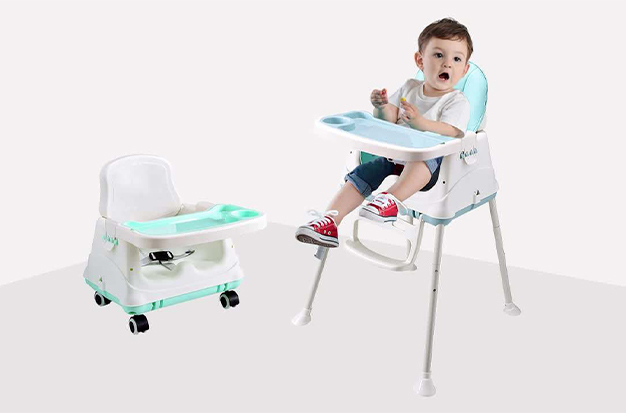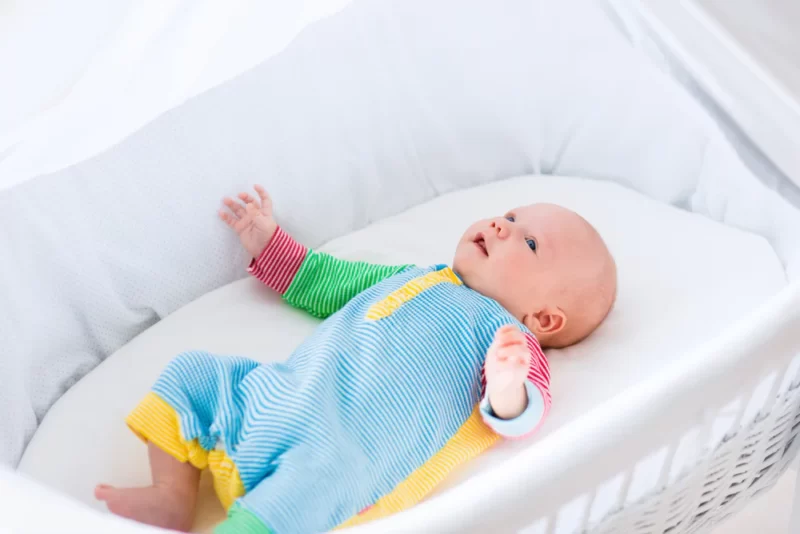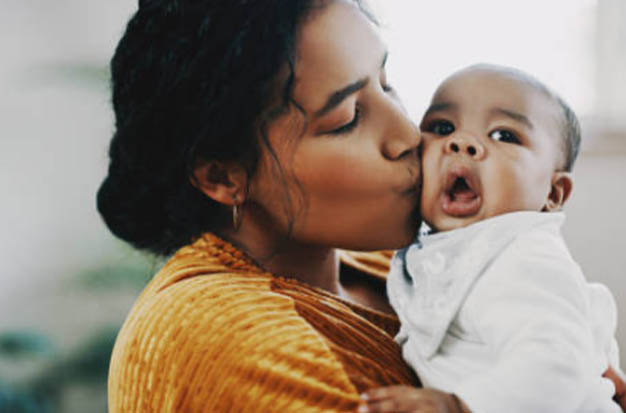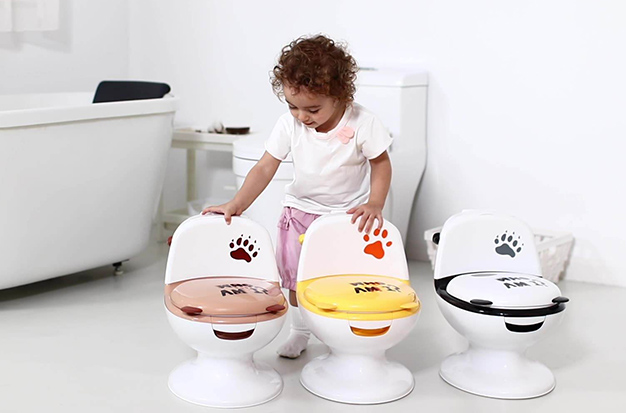When can your baby sit in the high chair?
One of the most important baby items you’ll purchase is a highchair, which can cost anywhere from 15 pounds to several hundred pounds. But are you aware of the qualities to look for in a highchair?
Your baby’s highchair can make or break their weaning experience, regardless of how fashionable it looks in your kitchen or how simple it is to clean after a truly sensory weaning experience.
To learn more, keep reading.
What Are High Chairs?
When it comes to feeding and mealtimes, high chairs are special chairs designed for infants and toddlers. Typically, the chair has a height-adjustable seat that can be raised to accommodate the parent’s height, whether they are standing or sitting, so they can feed the child comfortably. During mealtimes or when the child is eating alone, a tray that is typically on the boom can be used to hold utensils and food. The base of the high chair is typically wide for added stability, and some high chairs have seat belts to safely fasten the child to the seat.
When Is A Baby Allowed To Use A High Chair?
Parents often wonder when their infants can use a high chair or at what age they should begin using one. One standard age cannot be followed by parents because every baby is unique and develops in a different way. The typical age to place a baby in a high chair is six (6) months, however, according to high chair manufacturers and parenting authorities. But parents are free to make their own choices based on their child’s developmental stage. Between 4 and 6 months, some infants begin to sit independently or in an upright position.
Your child can use a high chair when he can sit up straight on his own or when he can demonstrate good stability with some support. A baby can be placed in a high chair for safety purposes if he or she can hold up their head without the use of pillows. Similar to how the baby’s shoulders should not require any support from a prop and should remain straight without it. Additionally, the infant should be able to independently move his arms.
Types Of High Chairs
There is a large selection of high chairs with various features. High chairs come in a variety of sizes and shapes, and not all of them have the same features. The parent should select a high chair based on the family’s lifestyle, the amount of space in the home, the features needed, and the budget.
To choose the ideal high chair for your baby, learn more about the various types of high chairs and their features by reading on.
Traditional High Chair
The conventional high chair is an upright or basic high chair. It is just a raised chair for a baby and can be made of metal, wood, or plastic. This chair lacks the frills of a contemporary high chair design, cannot be folded, and is intended to be kept in a specific location in the house.
Pros:
- Simple, basic design
- Available at a budget price
Cons:
- No modern features
- Cannot be folded to store away
Modern High Chair
The contemporary high chair is very feature-rich and resembles the classic high chair in appearance. These chairs have reclining seats, adjustable footrests, and adjustable tray heights. The chair has adjustable features that guarantee the infant’s comfort and make feeding the child simple for both the parent and the infant. As an added convenience, this high chair that reclines can be folded.
Pros:
- Adjustable parts
- Fold for storage
Cons:
- Complicated assembling
- More expensive than basic chairs
Convertible High Chair
When a child grows out of a high chair, convertible high chairs are the best option. This device functions as a high chair, a booster seat, a toddler chair, and an activity table and chair that are appropriate for kids! It is a long-term investment that can be put to use up until the child is 3 to 4 years old. Depending on the number of uses, these chairs are referred to as 3-in-1 or 4-in-1.
Pros:
- Long use period
- Multi-usage features
Cons:
- Takes a lot of storage space
- Bit expensive, as is multi-functional
Space Saver High Chair
Booster chairs or space-saving high chairs can turn any regular chair in your home into a high chair. The baby can sit in the booster chair for feeding and mealtimes by simply placing it on top of the regular chair. Families who live in apartments or who have limited space will appreciate the chair’s small size, which also helps with storage needs.
Pros:
- Fits on any chair
- Takes less space
- Easy to clean and store
Cons:
- Takes time to set up every time
- The chair gets messy
Fabric High Chair
When you travel, these chairs are ideal to have with you for your baby’s feeding time. It is a compact, lightweight chair that can be folded up and washed in a washing machine. By simply sliding over the cover and attaching the baby to it, they can be used on any chair that is readily available.
Pros:
- Foldable to a small size
- Machine washable
- Suitable for travel
Cons:
- Needs frequent washing
- Does not boost the height of the chair
Travel High Chair
The ideal chair for traveling or camping is a high chair. It is only intended for outdoor use. Usually, a metal frame supports a heavy-duty canvas chair. They can be folded for storage and don’t need to be assembled. However, they lack features like a removable tray, height adjustment, and reclining seats.
Pros:
- Easy to take on travels
- Weather-resistant
- Easy to clean
Cons:
- Not for indoor use
- Canvas tray can get messy
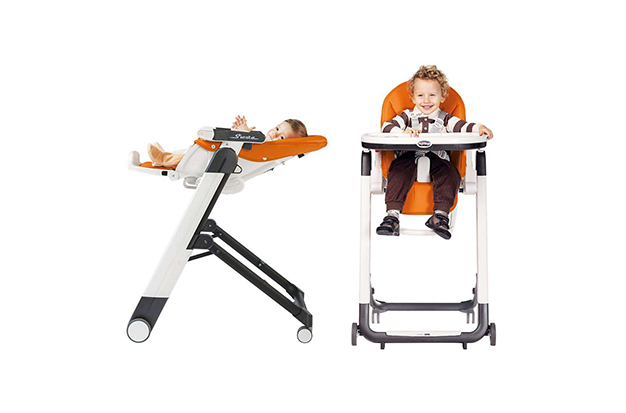
How Do You Pick A High Chair For Your Baby?
Make sure to consider all of your options before choosing a high chair. When it comes time to shop for a high chair, taking into account the following features can assist you in making the best decision for your way of life, available space, and personal preferences.
- Cleaning: The last thing you need is a high chair that requires extensive disassembly to clean. High chairs with few nooks or crevices where food or liquids can accumulate should have removable, washable covers.
- Durability: Make sure to choose a high chair that is made to last if you want to be able to use it for at least two years. Another important feature of a high chair is its stability—it should be hard to tip over.
- Safety features: For the reclining position, a five-point safety harness is essential for young babies, so it’s crucial to make sure the high chair you choose has these safety features. A well-secured safety strap should be used for the sitting position in high chairs to help prevent injury. Additionally, make sure the chair doesn’t have any easily accessible areas where little fingers could get entangled or pinched.
- Size: A high chair that clips onto the table or can be folded and stored when not in use might be a good option if you’re trying to fit one in a small space. Consider looking for travel high chairs that are simple to transport if you need to take your baby’s high chair somewhere else, such as on vacation or to a babysitter’s house.
- Wheels: Wheeled high chairs are very practical, especially if one parent is at home alone with the child and needs to multitask while the child is eating. Test the locking system on the wheels carefully, and be prepared to handle it quickly.
- Versatility: Keep in mind that high chairs with features like a removable tray and adjustable seat height will allow your child to grow with them more easily.
Remember to write down the brand and model number of your baby’s high chair after you make your purchase. Additionally, registering it with the business is a good idea. In the event that a manufacturer issues a recall due to safety concerns or for any other reason, you can take this easy step to enable you to act right away.
Safely Transitioning To A High Chair
Following these general high chair safety guidelines will help you transition your child to one:
- Verify that the high chair has received certification and has adhered to the advised safety standards. The JPMA (Juvenile Products Manufacturers Association) sticker on it, indicating that it complies with ASTM standards, will help you recognize it. The majority of industry professionals advise against using a used chair. To check for recalls if you must use one, make a note of the model name and the date of manufacture and visit the government website: www.recalls.gov.
- Fill out the product registration form to be notified in the event of a safety recall.
- Before putting your infant in the high chair for the first time, make sure you and any other caregivers feel at ease using it. Learn how the straps adjust and lock, the tray attaches and detaches, and how to fold and unfold the chair (if it has a folding mechanism) as well as how the leg locking mechanism works.
- Just before each use, inspect it for damage to ensure that the chair and straps are in place, the tray is still intact, and that it is free of any other issues.
- At mealtimes, keep your baby away from the table so they can’t reach for a tablecloth, utensil, or any sharp, hot, or glass objects while still being able to see your family and feel included in the celebration.
- Avoid positioning the chair close to a table, counter, or wall. Your infant can push off and tip the chair using this surface.
- To securely fasten your infant to the chair, always use a 3-point or 5-point harness. Babies who try to stand in their chair tend to have accidents. Any high chair should always be used with safety straps.
- A footrest that can be adjusted to support your baby’s feet should be present.
- In the high chair, never leave your baby alone. Have everything you need close by, such as drinks, wipes, and extra baby items, but keep them out of your baby’s reach. In order to avoid having to put your baby to sleep, prepare the food in advance. Your baby will benefit greatly from understanding at a young age that when it’s time to eat, it’s time to eat together at the table.
Conclusion
Choosing a highchair is more complicated than you might think, and your generous friend who is eager to give you all of their baby gear might not have the best highchair for your child.
Do your research, test out a few, prioritize functionality over style, and spend less money by purchasing the ideal highchair from the start (and avoid a DIY project as a result)!
